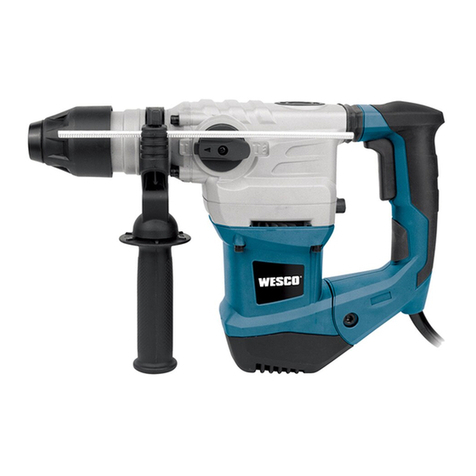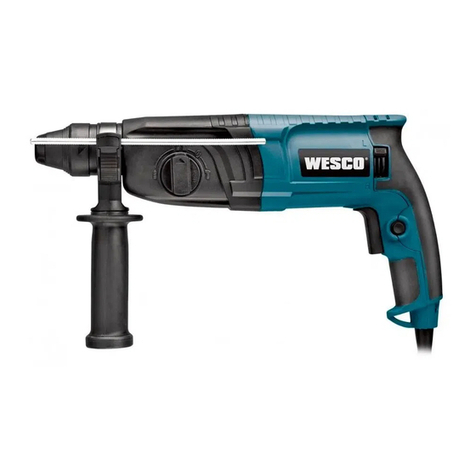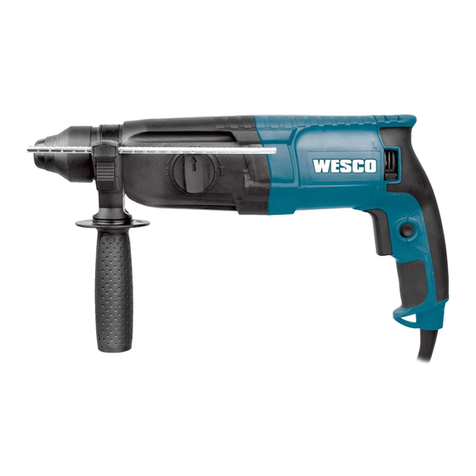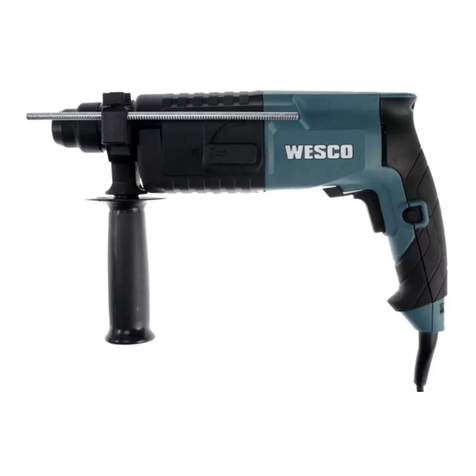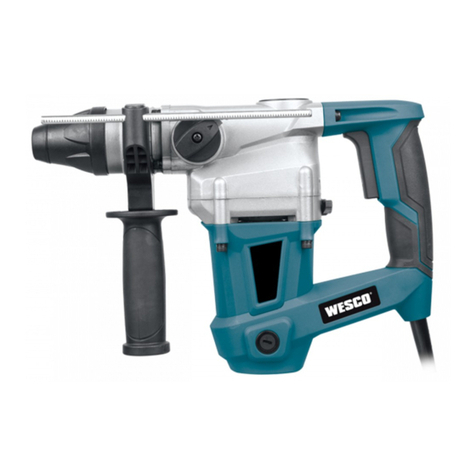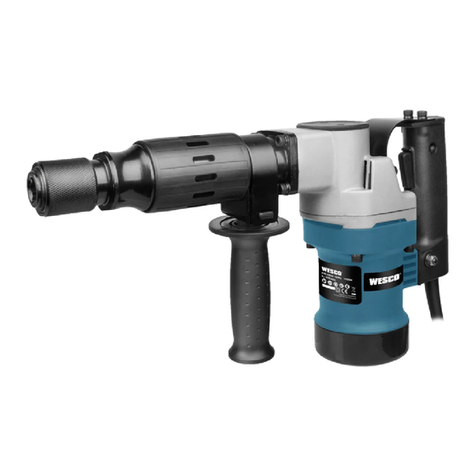
7
PT
permite controlar melhor a ferramenta elétrica em
situações imprevistas.
f) Use roupa apropriada. Não use vestuário
solto ou artigos de joalharia. Mantenha
o cabelo, vestuário e luvas afastados de
peças em movimento. Roupas soltas, artigos de
joalharia ou cabelos compridos podem ser agarrados
por peças em movimento.
g) Se forem fornecidos dispositivos para
a montagem de unidades de extração
ou recolha de resíduos, Assegure-
se de que são montados e utilizados
adequadamente. A utilização destes dispositivos
pode reduzir os perigos relacionados com a presença
de resíduos.
4. UTILIZAÇÃO E MANUTENÇÃO DA
FERRAMENTA ELÉTRICA
a) Não force a ferramenta. Utilize a
ferramenta elétrica apropriada para cada
aplicação. A utilização da ferramenta elétrica
apropriada executa o trabalho de forma melhor e mais
segura, à velocidade para a qual foi concebida.
b) Não utilize esta ferramenta se o
interruptor não estiver em perfeitas
condições de uso, não ligando ou
desligando. Qualquer ferramenta elétrica que não
possa ser controlada pelo interruptor é perigosa e deve
ser reparada.
c) Desligue o plugue da fonte de
alimentação e/ou remova a bateria
da ferramenta antes de proceder a
quaisquer ajuste, antes de trocar
os acessórios ou antes de guardar
a ferramenta. Estas medidas de segurança
preventivas reduzem o risco de acidentes com a
ferramenta.
d) Quando não estiver usando a ferramenta
elétrica, guarde-a fora do alcance
das crianças e não deixe que esta
seja utilizada por pessoas que não
a conheçam, nem tenham lido as
instruções.
As ferramentas elétricas são perigosas nas mãos de
pessoas inexperientes.
e) Faça a manutenção de ferramentas
elétricas. Verifique quaisquer
desalinhamentos, encaixes de peças
móveis, quebras e outras condições que
possam afetar o funcionamento. Se esta
ferramenta estiver avariada, mande-a
reparar antes a utilizar. Muitos acidentes são
causados pela manutenção deficiente de ferramentas
elétricas.
f) Mantenha as ferramentas de corte
limpas e afiadas. As ferramentas de corte,
discos de serra e outros acessórios com manutenção
adequada e arestas de corte (ou destes) afiadas têm
menos probabilidades de bloquear e são mais fáceis
de controlar.
g) Utilize a ferramenta elétrica, acessórios,
brocas, etc. em conformidade com estas
instruções e da forma prevista para este
tipo específico de ferramenta, tendo
em conta as condições presentes e o
trabalho a executar. A utilização de ferramentas
elétricas para aplicações diferentes daquelas a que se
destinam pode levar a situações de perigo.
5. UTILIZAÇÃO E MANUTENÇÃO DE
FERRAMENTA ALIMENTADA POR
CONJUNTO DE BATERIAS
a) Recarregue o conjunto de baterias
apenas com o carregador especificado
pelo fabricante. Um carregador para determinado
tipo de conjunto de bateria pode levar ao risco de
incêndio se utilizado com outro tipo de baterias.
b) Utilize ferramentas elétricas apenas
com os tipos de conjuntos de baterias
especificamente designados. A utilização de
quaisquer outros tipos de conjuntos de baterias pode
levar a riscos de lesão ou incêndio.
c) Quando não estiver utilizando o conjunto
de baterias, mantenha-o afastado de
objetos metálicos como clipes, moedas,
chaves, pregos, parafusos ou outros
objetos metálicos de pequena dimensão,
que possam fechar o contato entre os
terminais. O curto-circuito de terminais de bateria
pode provocar incêndios ou queimaduras.
d) Em condições inadequadas, o eletrólito
das baterias pode verter. Evite o contato.
Se ocorrer algum contato acidental, lave
com água. Se o líquido entrar em contato
com os olhos, procure imediatamente
aconselhamento médico. O líquido das
baterias pode provocar irritações na pele ou
queimaduras.
6. ASSISTÊNCIA TÉCNICA
a) A sua ferramenta elétrica só deve ser
reparada por um técnico de assistência
qualificada e autorizada Wesco e devem
ser apenas utilizadas peças de reposição






